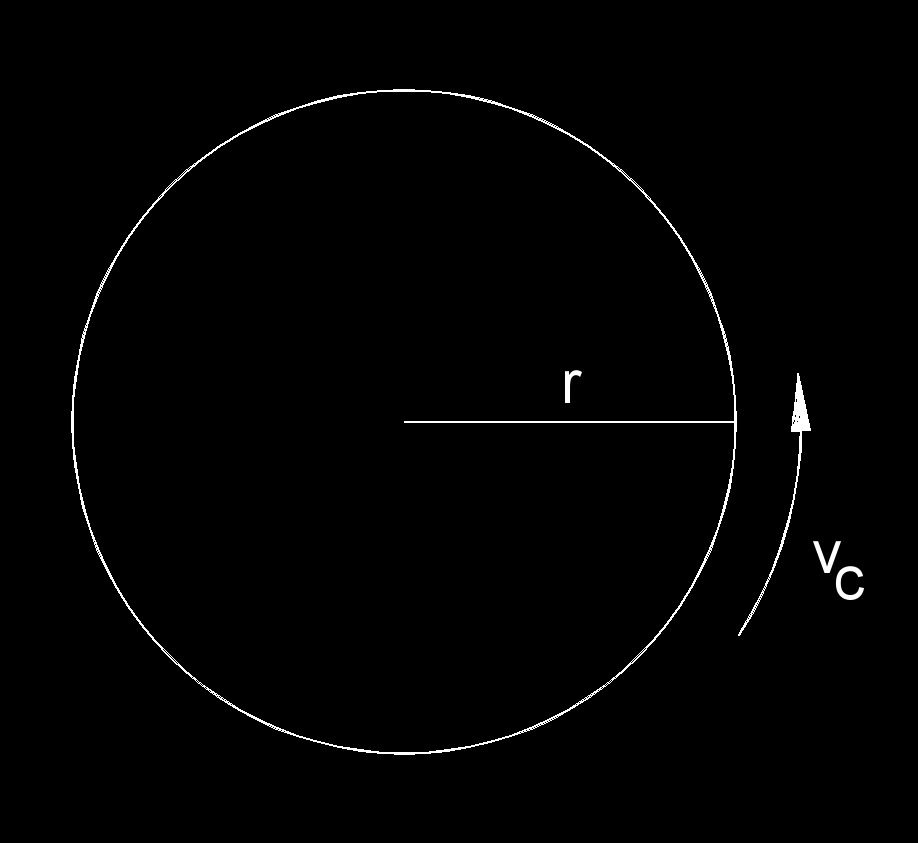Circular Velocity
Circular Velocity Formula |
||
|
\( v_c \;=\; \dfrac{ 2 \cdot \pi \cdot r }{ t } \) (Circular Velocity) \( r \;=\; \dfrac{ v_c \cdot t }{ 2 \cdot \pi }\) \( t \;=\; \dfrac{ 2 \cdot \pi \cdot r }{ v_c } \) |
||
| Symbol | English | Metric |
| \( v_c \) = Circular Velocity | \(ft\;/\;sec\) | \(m\;/\;s\) |
| \( \pi \) = Pi | \(3.141 592 653 ...\) | \(3.141 592 653 ...\) |
| \( r \) = Circular Path Radius | \(ft\) | \(m\) |
| \( t \) = One Complete Revolution Time | \(sec\) | \(s\) |
 Circular velocity, abbreviated as vc is the velocity at which an object moves around a circle with a given radius. It shows that the velocity of an object moving in a circular path is directly proportional to the radius of the path and the frequency of revolution, which is the reciprocal of the time for one complete revolution.
Circular velocity, abbreviated as vc is the velocity at which an object moves around a circle with a given radius. It shows that the velocity of an object moving in a circular path is directly proportional to the radius of the path and the frequency of revolution, which is the reciprocal of the time for one complete revolution.
This is used in many fields of science and engineering, including physics, astronomy, and mechanics. Some examples are, the circular velocity of a planet orbiting a star can be calculated using the circular velocity formula, given the planet's distance from the star and the time it takes to complete one orbit. Also, the circular velocity of a car driving around a banked curve can be calculated using the formula, given the radius of the curve and the coefficient of friction between the tires and the road.

Circular Velocity Formula |
||
|
\( v_c \;=\; \omega \cdot r \) (Circular Velocity) \( \omega \;=\; \dfrac{ v_c }{ r } \) \( r \;=\; \dfrac{ v_c }{ \omega }\) |
||
| Symbol | English | Metric |
| \( v_c \) = Circular Velocity | \(ft\;/\;sec\) | \(m\;/\;s\) |
| \( \omega \) (Greek symbol omega) = Angular Velocity | \(deg\;/\;sec\) | \(rad\;/\;s\) |
| \( r \) = Circular Path Radius | \(ft\) | \(m\) |
